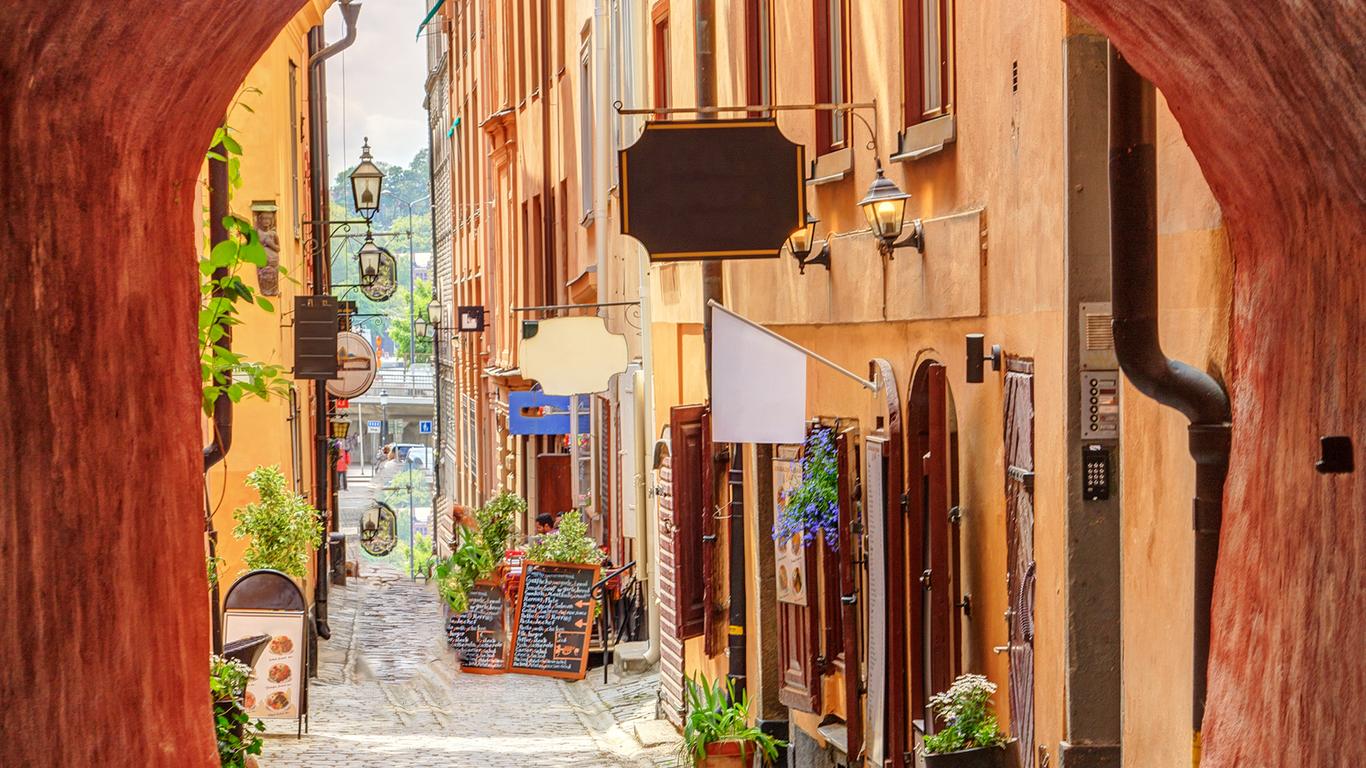Central Stockholm comprises of four separate districts, all of which make up the city centre of Sweden’s capital and the surrounding Stockholm Metropolitan Area. The four districts are Norrmalm, Kungsholmen, Ostermalm and Sodermalm. The city centre is split into two historical provinces, with 180,000 people living in the north and over 100,000 in the south.
Norrmalm is a commercial hub and place of modern architecture, providing an abundance of shopping opportunities in its renovated shopping malls as well as smaller antique stores, and is also a popular nightlife area of Stockholm. Kungsholmen contains the City Hall of Central Stockholm, an iconic capital landmark in the centre of the island, surrounded by peaceful parks and relaxing restaurants along the beautiful waterside. In the district of Ostermalm, visitors can discover the Square of Stureplan, which contains a famous monument and modern rain shelter called the mushroom, and variety of upmarket boutiques. Full of museums, shops and stunning city views, Sodermalm is one of the most popular districts of Central Stockholm, both for its trendy atmosphere and natural wonder, as visitors can climb high on the rocks for a unique perspective on the city.
The nearest airport to Central Stockholm is Stockholm-Arlanda Airport, the primary one of the city, located 40 kilometres to the north, which provides express buses and rail services to the central districts. The main train station is called Stockholm Central, and the main bus station is also close by, so visitors can use trains, light rail, local buses, boats and subways to navigate the centre.
Stockholm was not always the capital of Sweden and was not particularly documented until the 13th century, after the current capital, Sigtuna, was sacked by pirates, and it became an important waterway location for trade. Central Stockholm was the heart of the Swedish Empire in the 17th century, and it continued to grow into an important European capital. Specific central areas like Norrmalm developed significantly during the late 1800s, 1960s and 1990s, becoming redeveloped into a modern commercial hub, as well as the historic centre.





